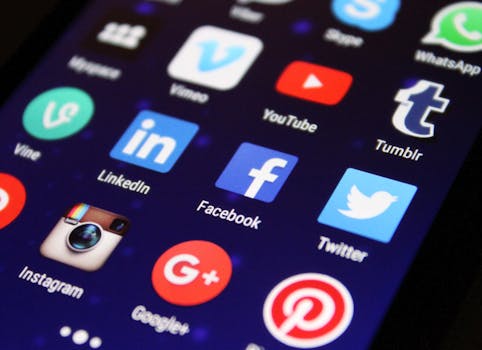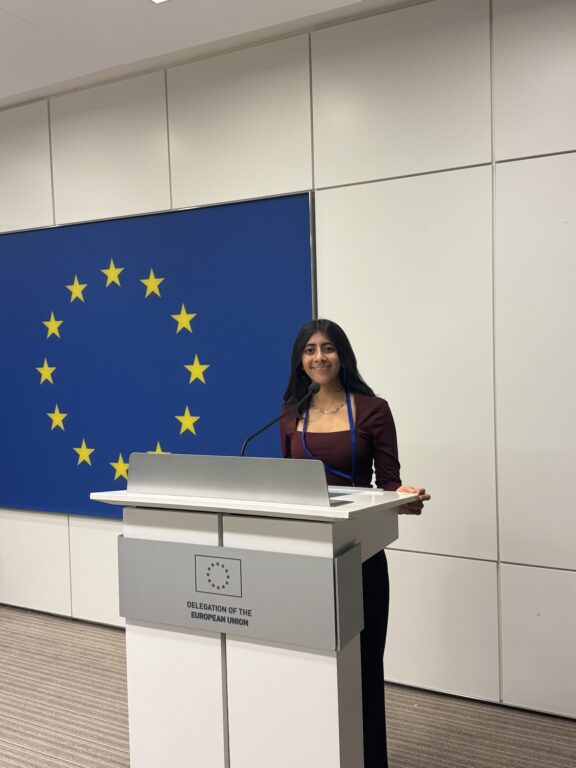By Naomi Limann
A prominent memory from 6th grade was my burning desire for a phone.
It seemed like every kid my age had one, connecting them to entertainment and social validation. I constantly argued with my parents about the unfairness of being at a disadvantage in staying connected with my friends and accessing popular media because my parents wouldn’t let me have a phone.
Now, my youngest sister is following the same course- but she’s even younger than I was. She’s entering fourth grade, and her top concerns are clothes, makeup, and getting a phone. While makeup and clothes are common interests for a growing girl, I was shocked to learn thatn some fourth graders already own phones.
This reminded me of a TikTok trend where young girls, dubbed “Sephora kids,” flock to Sephora for high-end skincare and makeup created for older consumers.. Parija Kavilanz wrote in CNN about tweens buying pricey skincare brands hyped by influencers. One mother celebrated her daughter’s 12th birthday at Sephora, noting that makeup is an “aspirational brand” to tweens, similar to the Stanley Tumblers craze. These products are status symbols, even if the kids don’t know how to use them.
Using my 9-year-old sister as a portal to the elementary world, I interviewed her to get her first-hand perspective on this situation. She mentioned that some of her friends complained about being pressured to wear makeup and being instructed by others on how to apply it correctly. When I asked if she felt pressured to wear makeup, she replied, “Kind of.”
She thinks she won’t fit in if she doesn’t talk about makeup, Lululemon, and Stanley cups—expensive products expensive products promoted by social media influencers.
Next, I sought insights from Gina Petruzzelli, my 14-year-old sister’s former teacher at a local middle school. Interviewing my sister’s 8th-grade science teacher offered valuable observations on the impact of social media on middle school students.
Petruzzelli has seen a significant change in how students communicate, with many struggling to interact face-to-face. Students spend more time online, which she thinks contributes to feelings of anxiety and insecurity. Others develop feelings of superiority due to online success. However, many students are becoming socially awkward and unaware, she says, “redefining what adolescence looks like.”
Regarding materialism, I believe social media accelerates kids’ desires to appear “cool.” Academic performance is also negatively affected by increased internet use, prompting some parents to impose limits.
I agree with Petruzzelli that parents and educators need to enforce strict phone usage rules. Petruzzelli shared that her school has implemented an “Off and Away” policy for phones, resulting in improved academic performance and fewer behavioral issues.
From these discussions, I believe high-end products are fueled by social media influencers. The online marketing site Emplifi defines an influencer as “a user on social media who has established credibility in a specific industry.” These are people who have access to a large audience and can persuade thousands of people through their social media interactions.
Influencing on social media has become a business. Many influencers are solely focused on their personal brand, which often involves encouraging children to purchase unnecessary—and sometimes dangerous—products.
Children, including my younger sister and her peers, look up to influencers and are frequently exposed to content that is inappropriate for their age group.
At a time when children struggle to differentiate fact from fiction, the presence of social media influencers makes adult guidance and monitoring more important than ever.
The fact that young children are going around wearing adult-styled clothing, using makeup, and looking like teenagers is dangerously bizarre. It reflects the lack of monitoring of children’s media consumption and the huge impact of social media on youth.
I agreed with Petruzzelli that addressing this issue requires efforts from both teachers and parents. It is their responsibility to limit phone and social media usage, even if it sparks complaints. The lack of such enforcement has dramatically altered how young children interact, think, and behave.
While we cannot solely blame influencers or parents for these changes, it is clear that the ripple effects of social media demand our immediate attention. To prevent further damage to the social and cognitive development of children, we must take decisive action now, halting this epidemic before it worsens.
Naomi Limann is a student at Blair Academy and an intern in the summer program sponsored by the World Affairs Council of Harrisburg and PennLive. View the original article published on PennLive.




